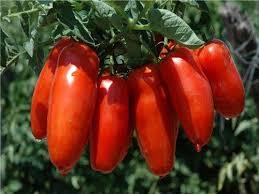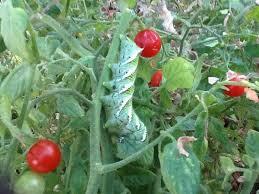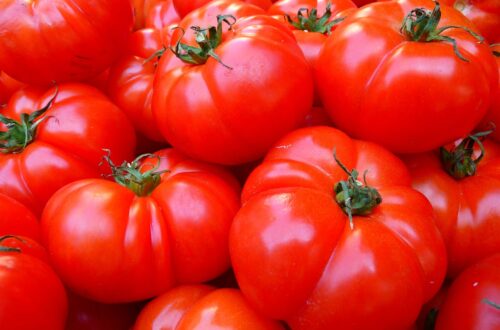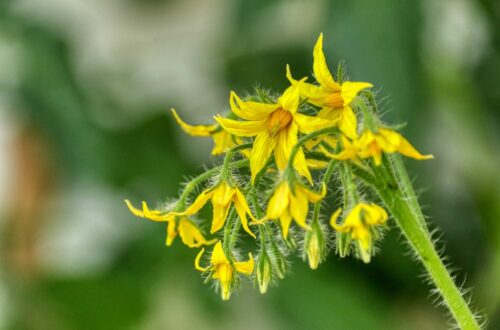
Tips for Growing San Marzano Tomatoes
Are you dreaming of making the perfect homemade marinara sauce, straight from your garden? If so, San Marzano tomatoes might be exactly what you need! Renowned for their rich flavor, meaty texture, and low acidity, San Marzano tomatoes are a favorite among gardeners and chefs alike. These Italian heirlooms are often considered the gold standard for sauce-making tomatoes. Whether you’re a seasoned gardener or new to tomato growing, these tips will help you cultivate a bountiful harvest of these prized tomatoes in your own backyard.
Why Choose San Marzano Tomatoes?
San Marzano tomatoes are a specific variety of plum tomatoes, originally grown in the volcanic soil near Mount Vesuvius in Italy. They are known for their elongated shape, fewer seeds, and thick flesh, which makes them ideal for sauces, canning, and drying. Their unique sweet and slightly tangy flavor has made them a staple in Italian cuisine, especially in dishes like pizza and pasta sauces. If you want to elevate your homemade sauces, San Marzano tomatoes are a must-grow in your garden.
Selecting the Right Location for Planting
The success of your San Marzano tomatoes starts with choosing the right location. Like all tomatoes, San Marzanos thrive in full sun, so select a spot that receives at least 6-8 hours of direct sunlight daily. The more sunlight your plants get, the better their growth and fruit production.

Soil Preparation
San Marzano tomatoes prefer well-drained, fertile soil with a pH between 6.0 and 6.8. Before planting, it’s essential to enrich the soil with plenty of organic matter. Incorporate compost or well-rotted manure into the soil to improve its structure and fertility. Good drainage is crucial to prevent waterlogging, which can lead to root rot and other diseases.
Raised Beds and Containers
If you have poor soil or limited garden space, growing San Marzano tomatoes in raised beds or containers can be a great option. Raised beds offer better control over soil quality and drainage, while containers allow you to grow tomatoes even on patios or balconies. Choose a large container, at least 18 inches in diameter, with drainage holes to ensure excess water can escape.
Planting San Marzano Tomatoes

San Marzano tomatoes are typically started from seeds indoors or purchased as young plants from a nursery. If you’re starting from seeds, sow them indoors about 6-8 weeks before the last expected frost date in your area.
Transplanting Seedlings
Once your San Marzano seedlings have grown to about 6-8 inches tall and have at least two sets of true leaves, they are ready for transplanting into the garden. To give them the best start, harden off the seedlings by gradually exposing them to outdoor conditions over 7-10 days.
When planting, space your San Marzano tomatoes about 24-36 inches apart. This spacing allows for good air circulation, which helps prevent disease and gives the plants room to grow. Plant the seedlings deeper than they were in their pots, burying them up to the first set of leaves. This deep planting encourages strong root development, which supports healthy, vigorous plants.
Supporting Your San Marzano Tomato Plants
San Marzano tomatoes are indeterminate, meaning they continue to grow and produce fruit throughout the season until the first frost. Because of their vining habit, they need support to keep the plants upright and the fruit off the ground.

Staking
Staking is a simple and effective way to support San Marzano tomatoes. Drive a sturdy stake, about 6-8 feet tall, into the ground next to each plant. As the tomato grows, tie the main stem to the stake with soft garden ties, being careful not to damage the stem. This method requires regular attention to keep the plant properly secured as it grows.
Caging
Tomato cages are another popular option, particularly for those who want a more hands-off approach. Choose a strong cage that’s at least 4-5 feet tall. Place the cage over the plant shortly after transplanting to avoid damaging the roots. The cage will support the plant as it grows, preventing it from sprawling on the ground and making harvesting easier.
Trellising
For gardeners with limited space, trellising is an excellent way to grow San Marzano tomatoes vertically. Install a trellis or a series of stakes and string to guide the plants upward. Trellising maximizes space and promotes better air circulation, which helps reduce the risk of disease.
Watering San Marzano Tomatoes

Proper watering is essential for the health and productivity of your San Marzano tomato plants. Tomatoes require consistent moisture, but overwatering can lead to problems like root rot and fungal diseases.
Watering Guidelines
Tomatoes generally need about 1-2 inches of water per week, but this can vary depending on weather conditions. In hot, dry climates, you may need to water more frequently. Water deeply at the base of the plants, aiming to keep the foliage dry. This helps prevent diseases like blight, which thrive in moist conditions.
Mulching
Mulching around your San Marzano tomatoes is a great way to conserve moisture, regulate soil temperature, and reduce weeds. Apply a 2-3 inch layer of organic mulch, such as straw, compost, or shredded leaves, around the base of the plants. Be sure to keep the mulch a few inches away from the stem to prevent moisture buildup that could lead to rot.
Fertilizing for Optimal Growth
San Marzano tomatoes are heavy feeders, meaning they require a steady supply of nutrients to support their vigorous growth and abundant fruit production.
Fertilizer Selection
Start by mixing a balanced fertilizer (such as 10-10-10) into the soil at planting time. Once the plants start to flower, switch to a fertilizer higher in phosphorus and potassium (such as 5-10-10) to encourage fruit development. Avoid fertilizers high in nitrogen, as they can promote excessive leaf growth at the expense of fruit.
Fertilizing Schedule
Feed your San Marzano tomatoes every 4-6 weeks throughout the growing season. In addition to granular fertilizer, consider supplementing with liquid seaweed or fish emulsion every 2-3 weeks to provide additional nutrients. Always water the plants thoroughly after fertilizing to prevent root burn.

Pruning and Maintenance
Pruning is an important part of caring for San Marzano tomatoes. Proper pruning helps improve air circulation, reduce the risk of disease, and encourage the plants to focus their energy on producing fruit.
Pruning Suckers
Suckers are the small shoots that grow in the axils between the main stem and the leaf branches. While some gardeners let suckers grow, pruning them can help your plants produce larger, healthier fruit. To prune, pinch off the suckers when they are small, ideally 2-4 inches long. This will direct the plant’s energy towards the main stems and fruit production.
Removing Yellow or Diseased Leaves
As your San Marzano plants grow, you may notice some leaves turning yellow or showing signs of disease. Remove these leaves promptly to prevent the spread of disease and keep the plant focused on healthy growth.
Managing Pests and Diseases

San Marzano tomatoes, like all tomatoes, can be susceptible to pests and diseases. Early detection and treatment are key to keeping your plants healthy and productive.
Common Pests
- Aphids: These small, sap-sucking insects can weaken your plants by feeding on the leaves. Control aphids with insecticidal soap or by releasing beneficial insects like ladybugs into your garden.
- Tomato Hornworms: These large, green caterpillars can cause significant damage by eating the leaves and stems of your plants. Handpick hornworms off your plants, or use a natural insecticide like Bt (Bacillus thuringiensis).
- Whiteflies: Whiteflies are tiny insects that can spread diseases and weaken your plants by feeding on the sap. Use yellow sticky traps to catch whiteflies, or spray your plants with neem oil to deter them.

Common Diseases
- Blossom End Rot: This condition causes dark, sunken spots on the bottom of the fruit and is typically caused by a calcium deficiency or inconsistent watering. To prevent blossom end rot, maintain consistent soil moisture and ensure your soil has adequate calcium.
- Early Blight: Early blight causes dark, concentric rings on the leaves and fruit. Prevent it by ensuring good air circulation, avoiding overhead watering, and applying a fungicide if necessary.
- Fusarium Wilt: This soil-borne fungus causes yellowing and wilting of the leaves. To prevent fusarium wilt, rotate your crops each year and choose resistant varieties when possible.
Harvesting San Marzano Tomatoes
One of the most rewarding aspects of growing San Marzano tomatoes is harvesting the ripe, flavorful fruit. San Marzano tomatoes typically ripen about 75-85 days after transplanting.
When to Harvest
San Marzano tomatoes are ready to harvest when they are fully red and slightly firm to the touch. These tomatoes have a long harvest window, and picking them regularly encourages the plant to produce more fruit.
Storing Your Harvest
San Marzano tomatoes are best when used fresh, but they can also be stored at room temperature for several days. Avoid refrigerating tomatoes, as cold temperatures can reduce their flavor and texture. If you have a large harvest, consider preserving the tomatoes by canning or making sauce to enjoy throughout the year.
Cooking with San Marzano Tomatoes
San Marzano tomatoes are famous for their use in Italian cuisine, particularly in sauces. Their low moisture content and fewer seeds make them ideal for cooking down into a thick, rich sauce. Use your homegrown San Marzanos in classic Italian dishes like marinara sauce, pizza sauce, or tomato soup. They also work well in stews, casseroles, and as a base for many other recipes.

Saving Seeds for Next Season
One of the benefits of growing heirloom varieties like San Marzano is that you can save the seeds from this year’s harvest to plant next year. To save seeds, choose fully ripe tomatoes, scoop out the seeds, and ferment them in water for several days. After fermentation, rinse the seeds and let them dry completely before storing them in a cool, dry place.
Growing San Marzano tomatoes is a rewarding experience that brings a taste of Italy right to your garden. By following these tips, you can enjoy a bountiful harvest of rich, flavorful tomatoes perfect for all your cooking needs. Whether you’re making a homemade marinara sauce, canning for the winter, or simply enjoying the fruits of your labor, San Marzano tomatoes are sure to elevate your gardening and culinary adventures.



